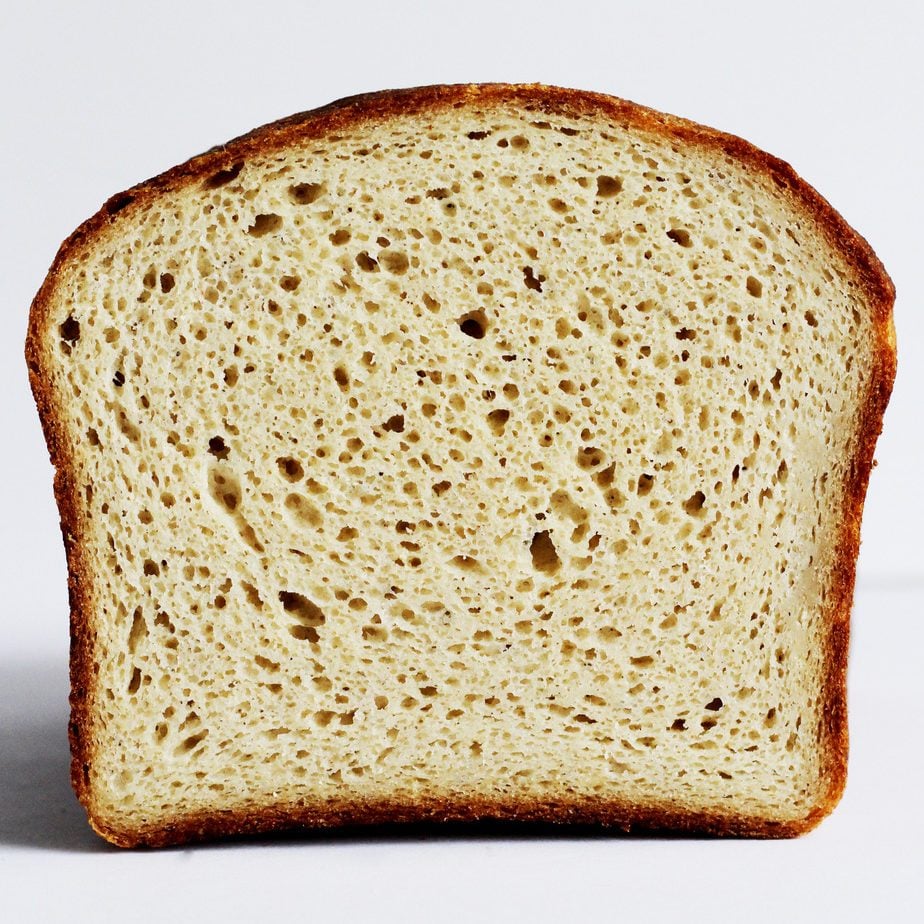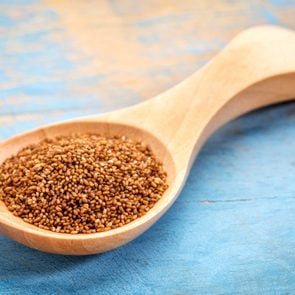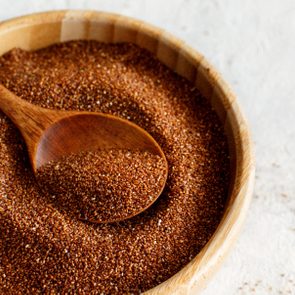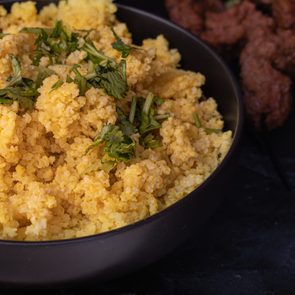A Recipe for Millet Bread This Registered Dietitian Loves
Updated: Mar. 14, 2022
Want to try baking with millet but not sure where to start? Grab this millet bread recipe and head to your kitchen, pronto.
What is millet?
When it comes to ancient grains, you really need to know about millet.
First cultivated thousands of years ago in Asia, millet was a major grain in Europe during the Middle Ages. Nowadays, the gluten-free cereal grain is widespread around the world, especially in Africa and Asia.
Though you may recognize it as birdseed (yep, it’s the same grain), it’s celebrating a resurgence in popularity in the United States. These days, you can find it millet porridge, millet flour, baked goods made from millet, and even millet bread.
How healthy is millet?
There’s definitely reason to try the nutrient-rich grain. Millet boasts protein and fiber, as well as a plethora of other nutrients, including the minerals iron and potassium.
“Switching up the type of grain you consume can expose you to a further variety of nutrients, which is great,” says Elizabeth Gunner, RD, a registered dietitian in New York City.
Of course, the major selling point is that millet is gluten free, making it a good choice for anyone with celiac disease (a genetic autoimmune disease that affects about 1 percent of the population) or a non-celiac gluten sensitivity. “The demand for gluten-free products has increased because gluten-free eating has become increasingly more trendy and the diagnosis of gastrointestinal disorders such as celiac disease is rising,” says Gunner.
While millet is a suitable grain for many people to enjoy, take caution if you have a thyroid condition such as hypothyroidism. Millet has goitrogenic properties, which means it can impair thyroid function, notes Michelle Routhenstein, RD, a cardiology dietitian and owner of Entirely Nourished. If you have a thyroid condition, speak with your doctor before adding millet to your diet.
What does millet taste like?
Millet has a mild, nutty taste. This is what makes it so versatile in foods and recipes, from breakfast cereal to bread.
Thanks to its mild flavor, millet flour is a solid choice for baked goods, and more and more home cooks and bakeries are using it in bread products. Plus, it’s easy to find; several brands make the flour.
A nutritious millet bread recipe
Just because a bread contains millet doesn’t mean it’s necessarily healthy.
If you’re looking for a millet bread recipe, you’ll want to make sure that the bread contains a high amount of whole grains. And if you’re gluten intolerant, check to be sure the other grains in the bread are gluten free—sorghum flour is a good choice.
The millet bread recipe below, from Talia Tutak, owner of Sixteen Mill Bakeshop in Brooklyn, New York, is a nutritious option for anyone looking to bake a millet bread.
Each serving—one slice of bread—contains only 80 calories, plus, you get 1 gram each of satiating protein and fiber per slice, as well as 6 percent of the recommended daily value for iron.
You’ll notice that much of the recipe is written in grams and milliliters. Tutak notes that gluten-free baking must be incredibly precise, so you will want to use a food scale when you prepare this recipe.
If you are looking to reduce added sugar in your diet, Tutak says that it’s completely fine to remove the maple syrup from the recipe.

White Millet and Sorghum Loaf
Ingredients:
- 500 milliliters lukewarm water
- 1 1/2 teaspoons instant yeast
- 25 grams finely ground psyllium husk powder
- 10 grams maple syrup
- 35 grams olive oil
- 100 grams millet flour
- 100 grams sorghum flour
- 100 grams cornstarch
- 30 grams potato flour
- 1 teaspoon salt
- Spray oil
Directions:
- Combine water, yeast, and psyllium husk powder in a stand mixer. Let mixture sit for 5 minutes, until gelatinized. Add in maple syrup and olive oil.
- Add dry ingredients, and mix with a paddle (not hook) attachment for 10 minutes.
- Shape the loaf (wet your hands if they’re too sticky), and place it in a 8″-9″ loaf pan; cover with cling film. Proof for 45-60 minutes.
- Preheat oven to 400 degrees Fahrenheit. Spray top of bread with oil, then cover bread with foil. Bake for 30 minutes. After 30 minutes, uncover and bake for an additional 20 minutes, until bread turns a golden brown.
- Let bread cool, then slice and toast for best results. Makes 20 servings.
Nutritional information per serving: 80 calories, 2 grams fat, 1 gram protein, 15 grams carbs, 0 grams sugar, 1 gram fiber, 0 grams cholesterol, 120 mg sodium























